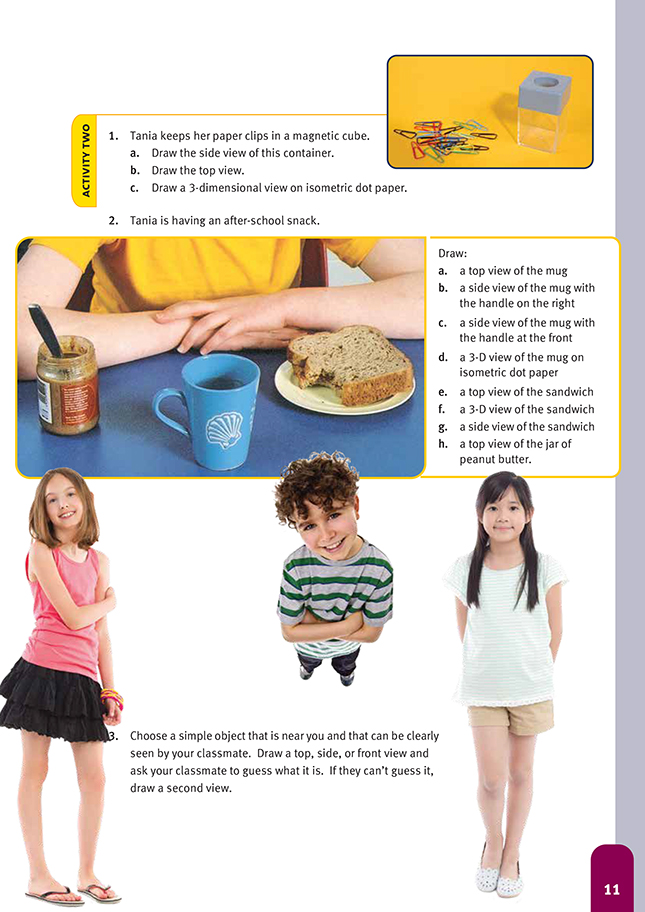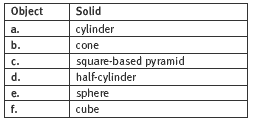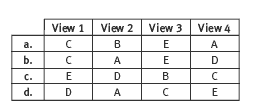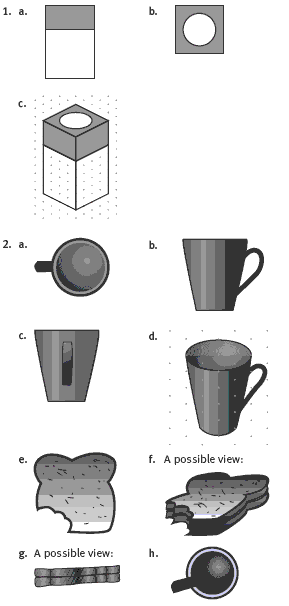This is a level 4 geometry strand activity from the Figure It Out series.
A PDF of the student activity is included.
Click on the image to enlarge it. Click again to close. Download PDF (309 KB)
draw different views of three dimensional shapes
FIO, Level 4, Geometry, Book One, A Different View, page 10
multilink cubes
classmate
Copymster of isometric dot paper
In these activities, students have to visualise 2-dimensional drawings as the 3-dimensional objects they represent, not only from the given direction but also from various other directions. Some students (and adults) find such visualisation easy; others find it very difficult. Students can develop their visualising skills
by practising with actual objects.
Activity One
In question 1, the students work with symmetrical objects that have known shapes. This gives you an opportunity to discover which of your students are unable to visualise in 3 dimensions. If possible, have models of the different solids to discuss with these students. You can then talk about the visual clues that they need to recognise (for example, the dot in the centre of the bird's-eye view of object b, which is the only clue that separates it from the bird's-eye views of a and e). You could extend question 1 by asking your students which of the objects have other possible side views (c, d, and f) and why they have alternative views when the others don't. (They are not fully symmetrical about their vertical axis.)
Question 2 is more difficult than the first question because the solids are no longer regular. In each case, part of the object is hidden, and if the students were only given the isometric view, they couldn't be confident about the hidden views.
The important thing is to use all the information. In each case, the students are given 5 views of the solid, and there is only one shape that will fit all those views. The students should pay attention to the internal lines in views 1-4. These lines show that there is a change of plane at this point (rather than a single, continuous face).
Question 2 should be done as a practical task. Make sure that you have a good supply of multilink cubes so that your students can build the solids, perfecting them as they make them consistent with all the views.
You may wish to discuss the concept of isometric drawing with your class. Isometric drawing is one way to represent 3-dimensional objects in 2 dimensions. The technique is especially suited to objects with sides that are rectangular or square. The key ideas are:
- The object is turned so that you are looking at a vertical edge (not a face).
- You can choose which vertical edge is the leading (front) edge. Turn the object until you find the direction that reveals its structure best.
- Only the edges visible from the chosen direction are drawn, and in an object made from blocks, the joins between blocks are drawn only where there is a change of plane.
- The 3 dimensions (length, breadth, and height) are represented by 3 axes that form angles of 60 degrees with each other. For convenience, we often use isometric dot paper, which has rows of dots set at the correct angles and avoids the need to measure lengths.
Most students learn basic isometric drawing (using isometric dot paper) very quickly and enjoy it. For a challenging activity involving isometric drawing, see Missing Anything! in Geometry: Book 2, Figure It Out, Years 7-8.
Activity Two
In this activity the students work from objects to diagrams. While a ruler is appropriate for question 1, questions 2 and 3 call for freehand drawing using a soft pencil (not felt-tip pens). Those who have artistic skills may wish to render (shade) their drawings. Rendering is especially useful for bringing out the 3-dimensionality of objects (as in question 2f). Note that the students should use isometric dot paper
only where specified, that is, in questions 1c and 2d.
Answers to Activities
Activity One
1.
.
2.
Activity Two
3. Practical activity




